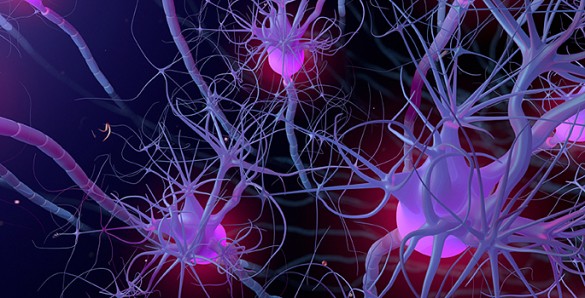
Compulsive overeating and sugar addiction are major threats to human health, but potential treatments face the risk of impairing normal feeding behaviors that are crucial for survival. Now, a new study published in the journal Cell has revealed a reward-related neural circuit that specifically controls compulsive sugar consumption in mice without preventing feeding necessary for survival, providing a novel target for the safe and effective treatment of compulsive overeating in humans.
“Although obesity and Type 2 diabetes are major problems in our society, many treatments do not tackle the primary cause: unhealthy eating habits,” says senior study author Dr. Kay Tye of the Massachusetts Institute of Technology. “Our findings are exciting because they raise the possibility that we could develop a treatment that selectively curbs compulsive overeating without altering healthy eating behavior.”
Compulsive overeating is a type of reward-seeking behavior, similar to drug addiction. But the major difference between the two behaviors is that eating is required for survival, underscoring the need to tease apart brain circuits involved in compulsive overeating versus normal feeding to develop safe and effective therapies. Dr. Tye and her team suspected that a neural pathway from the lateral hypothalamus to the ventral tegmental area might play an important role in compulsive overeating because these brain regions have been implicated in reward-related behaviors such as eating, sexual activity, and drug addiction.
To test this idea, Dr. Tye and her team used a technique called optogenetics, which involves genetically modifying specific populations of neurons to express light-sensitive proteins that control neural excitability, and then delivering either blue or yellow light through an optic fiber to activate or inhibit those cells, respectively.
The researchers found that activation of the pathway from the lateral hypothalamus to the ventral tegmental area caused well-fed mice to spend more time feeding and increased the number of times mice poked their nose into a port to receive a sugar reward, even when they had to cross a platform that delivered foot shocks to get to the reward. In contrast, inhibition of the same pathway reduced this compulsive sugar-seeking behavior without decreasing food consumption in hungry mice, suggesting that different neural circuits control feeding in hungry animals.
In a separate study also published in Cell, Dr. Garret Stuber of the University of North Carolina School of Medicine and his team similarly used an optogenetic approach in mice to identify neurons in the lateral hypothalamus that control both feeding and reward-seeking behavior. By imaging the activity of hundreds of individual lateral hypothalamus neurons as the mice freely explored an area with food or worked to obtain a sweet reward, they further uncovered distinct subsets of neurons that either mediate food-seeking behavior or respond to reward consumption.
According to Dr. Tye, it makes sense that brain circuits evolved to support binging on scarce, sugary foods whenever these valuable sources of energy become transiently available during certain seasons. But in the winter, it might be adaptive for separate neural circuits to drive hungry animals to eat whatever type of food is available but to consume less overall to ration out limited resources.
“However, in our modern day society, there is no scarcity of palatable foods, and high-sugar or high-fat foods are often even more available than fresh produce or proteins,” Tye says. “We have not yet adapted to a world where there is an overabundance of sugar, so these circuits that drive us to stuff ourselves with sweets are now serving to create a new health problem. The discovery of a specific neural circuit underlying compulsive sugar consumption could pave the way for the development of targeted drug therapies to effectively treat this widespread problem.”
